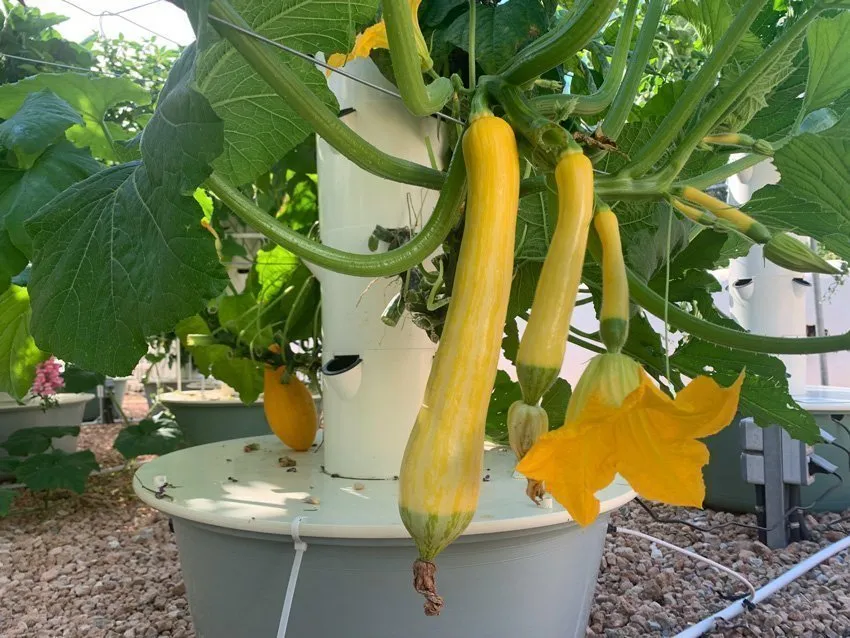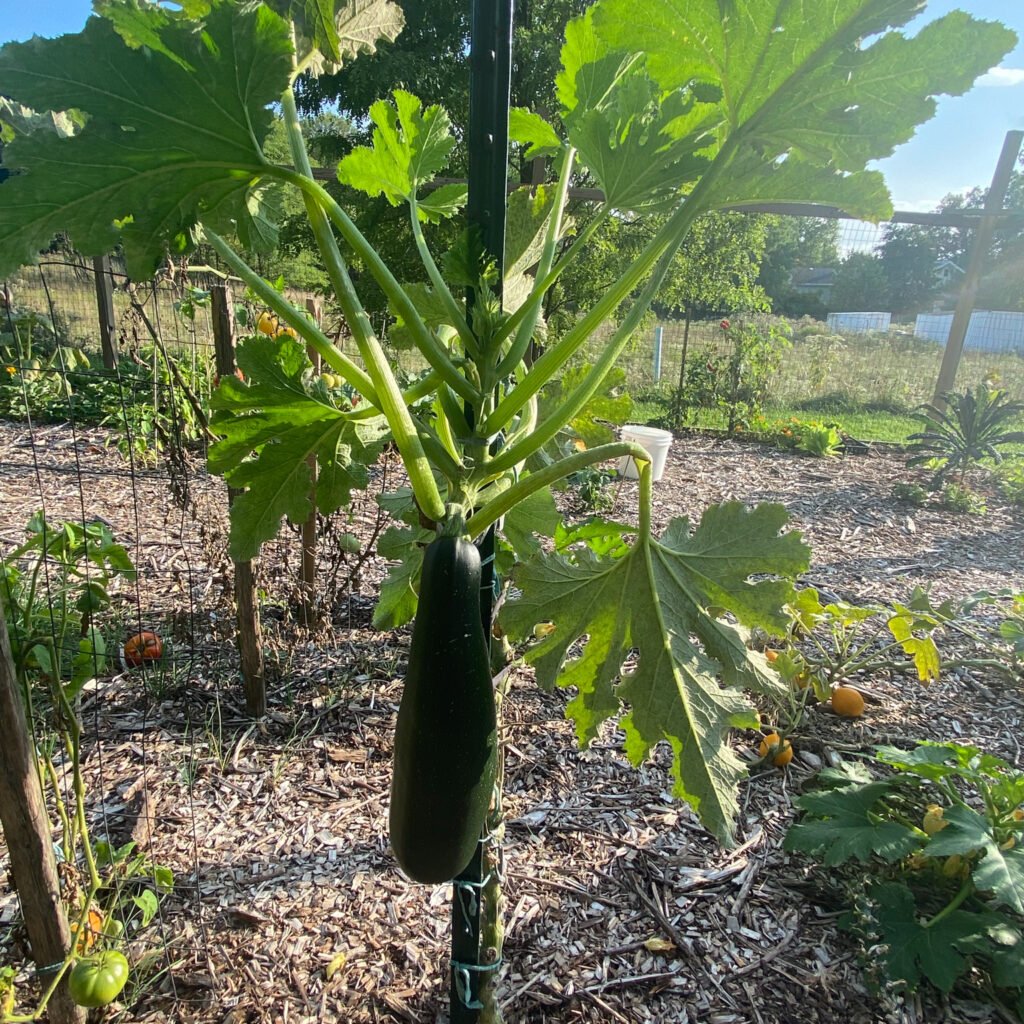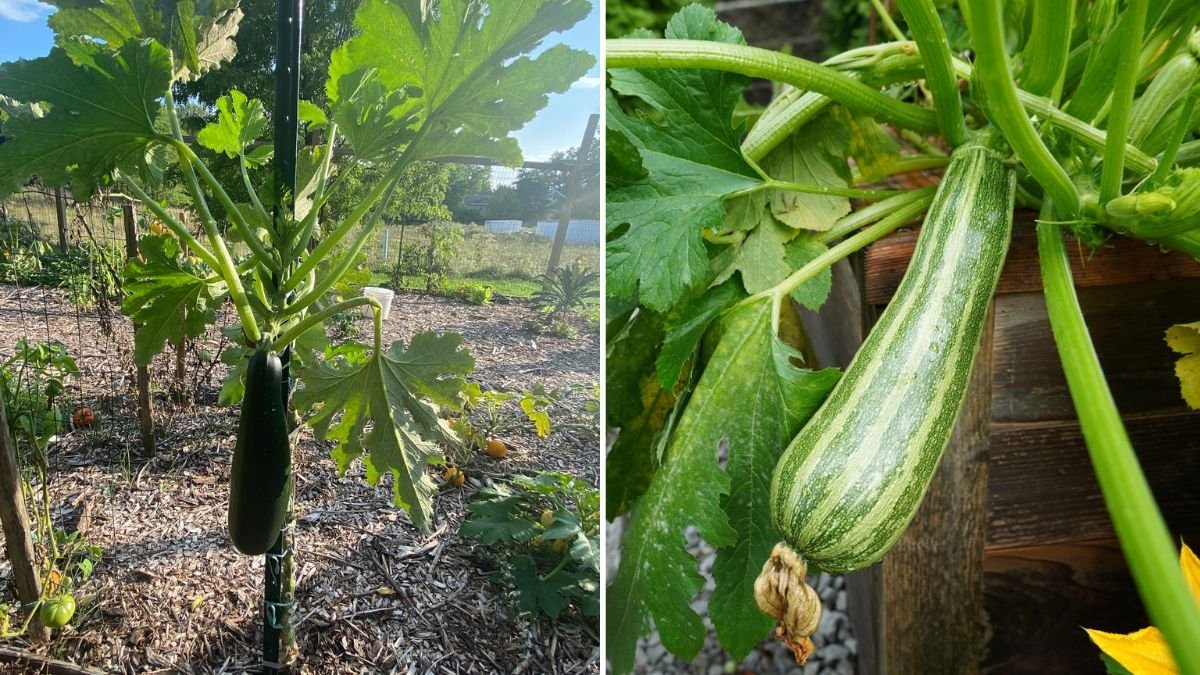If you’ve ever wanted to grow your own zucchini but thought you didn’t have the space, bush zucchini is about to change your gardening game. These compact, highly productive plants bring the taste of summer right to your patio, balcony, or backyard—no sprawling vines required.
Unlike traditional vining zucchini that can take over an entire garden bed, bush zucchini plants grow in neat, contained mounds, making them perfect for small gardens, raised beds, and containers. Despite their modest size, they yield plenty of tender, flavorful zucchinis that are perfect for grilling, baking, or sautéing.
In this 1,200-word guide, we’ll explore everything you need to know about bush zucchini—from choosing the best varieties and growing tips to harvesting, storage, and delicious recipes—all tailored for American gardeners and home cooks.
1. What Is Bush Zucchini?

Bush zucchini (Cucurbita pepo) is a type of zucchini bred for compact growth. While traditional zucchini varieties send out long vines that can stretch 6 to 10 feet, bush types form tidy, dense mounds that typically stay within 2 to 3 feet in diameter.
They produce the same tender, green fruits you’d expect from regular zucchini—just with less space, less maintenance, and earlier yields. Bush zucchini is perfect for:
- Urban and suburban gardeners with limited yard space
- Container or patio gardens
- Raised garden beds
- Beginner gardeners seeking easy, reliable harvests
These smaller plants pack big rewards, making them a top pick for modern American home gardeners who value efficiency and versatility.
2. Top Bush Zucchini Varieties for American Gardens
Choosing the right variety makes all the difference. The following bush zucchini varieties are among the best for American climates—each offering unique flavors, colors, and yield potential.
‘Black Beauty’
A classic heirloom variety with deep green skin and creamy flesh. It matures early and thrives across most U.S. regions.
‘Raven’
This hybrid produces dark, glossy zucchini with a rich flavor. It’s compact and resistant to common diseases like powdery mildew.
‘Eight Ball’
A fun, round zucchini variety that looks like a small green ball—great for stuffing and grilling.
‘Bush Baby’
Specifically bred for small gardens, this mini variety offers continuous production and thrives in containers.
‘Gold Rush’
A striking yellow zucchini with tender skin and mild flavor. Perfect for adding color to salads or stir-fries.
These varieties perform exceptionally well in USDA Zones 3–10, covering nearly all American growing regions—from cool northern states to warm southern climates.
3. Why Choose Bush Zucchini for Your Garden?

Bush zucchini offers several advantages that make it a favorite for small-space gardeners:
- Compact size: Requires less room—perfect for balconies, patios, and raised beds.
- High productivity: Produces abundant fruits despite small plant size.
- Fast-growing: Harvest ready in 45–55 days after planting.
- Low maintenance: Easier to water, harvest, and protect from pests.
- Ideal for containers: Grows beautifully in pots as small as 5 gallons.
With a little sunlight and care, one or two bush zucchini plants can supply a family with fresh summer squash for months.
4. How to Grow Bush Zucchini
Bush zucchini is surprisingly easy to grow, even for first-time gardeners. Here’s how to do it right:
When to Plant
- Plant after the last frost date in your region, when soil temperatures reach 65°F or warmer.
- In southern U.S. states, you can even plant two crops—one in spring and one in late summer.
Soil Preparation
Zucchini loves rich, well-draining soil.
- Ideal pH: 6.0 to 7.5.
- Work in compost or aged manure before planting for strong root development.
Planting
- Sow seeds 1 inch deep and 2–3 feet apart in garden beds.
- For containers, plant 1–2 seeds per pot (12–18 inches wide, at least 12 inches deep).
- Once seedlings emerge, thin to one healthy plant per spot.
Light and Temperature
Zucchini loves the sun! Aim for 6–8 hours of direct sunlight daily. The warmer the soil, the faster the growth.
Watering
- Keep soil consistently moist but not soggy.
- Water deeply at the base of the plant—avoid overhead watering to reduce disease risk.
- Mulch to retain moisture and suppress weeds.
5. Container Gardening with Bush Zucchini

Growing bush zucchini in pots is one of the easiest ways to enjoy a backyard harvest—no matter where you live.
Tips for successful container growing:
- Choose large pots (minimum 5 gallons).
- Use well-draining potting mix enriched with compost.
- Place the pot in a sunny location, such as a deck or balcony.
- Water regularly—containers dry out faster than garden beds.
- Feed with a balanced fertilizer (10-10-10) every 2–3 weeks.
Bush zucchini in containers not only saves space but also adds greenery and visual appeal to outdoor living areas.
6. Caring for Bush Zucchini Plants
Fertilizing
Feed your plants with a low-nitrogen fertilizer to encourage fruiting over leafy growth. Too much nitrogen will result in lush foliage but fewer zucchinis.
Pollination
Zucchini plants produce separate male and female flowers. Bees and other pollinators are essential, so avoid pesticides that harm them. If pollination seems low, hand-pollinate using a small brush to transfer pollen from male to female flowers.
Common Pests and Diseases
Bush zucchini can attract pests such as:
- Squash bugs – remove by hand or use neem oil.
- Cucumber beetles – control with floating row covers.
- Aphids – spray with insecticidal soap.
To prevent diseases like powdery mildew, ensure good air circulation and water early in the day. Rotate crops annually to maintain healthy soil.
7. Harvesting Bush Zucchini

Bush zucchini grows fast, and once it starts producing, you’ll be harvesting every few days!
When to Harvest:
- Pick zucchinis when they’re 6–8 inches long for best flavor and texture.
- Smaller fruits are more tender and flavorful.
- Harvest regularly—if you leave fruits too long, they’ll become large, seedy, and reduce future yields.
Use pruning shears or a sharp knife to cut zucchinis off the plant without damaging the stem.
8. How to Store Zucchini
Proper storage helps you enjoy fresh zucchini long after harvest.
Short-Term Storage:
- Store unwashed zucchinis in the refrigerator crisper drawer.
- They stay fresh for up to 10 days.
Long-Term Storage:
- Freeze: Slice and blanch zucchini for 2 minutes before freezing in airtight bags.
- Dehydrate: Dry thin slices to use in soups or snacks.
- Pickle: Preserve in vinegar and spices for tangy, crunchy treats.
9. Delicious Ways to Cook Bush Zucchini

Zucchini is one of America’s most versatile vegetables. Whether grilled, baked, or spiralized, it’s easy to include in healthy meals.
1. Grilled Zucchini with Olive Oil & Herbs
Slice zucchini lengthwise, drizzle with olive oil, season with salt and pepper, and grill until tender.
2. Zucchini Noodles (Zoodles)
Use a spiralizer to create low-carb “zoodles” as a pasta alternative. Toss with marinara or pesto sauce.
3. Homemade Zucchini Bread
Grate fresh zucchini into your favorite quick-bread recipe for extra moisture and sweetness.
4. Stuffed Zucchini Boats
Halve zucchinis lengthwise, scoop out centers, fill with seasoned veggies or meat, and bake.
5. Zucchini Fritters
Mix grated zucchini with egg, flour, and spices, then fry until golden—perfect for brunch or snacks.
These simple dishes highlight the mild, buttery flavor of bush zucchini and make use of your garden’s bounty in delicious ways.
10. Health Benefits of Zucchini
Zucchini isn’t just tasty—it’s a nutrient-rich superfood.
Low in Calories
One cup of zucchini has just about 20 calories, making it ideal for weight management.
Hydrating and Fiber-Rich
Composed of 95% water and loaded with fiber, zucchini supports healthy digestion and hydration.
Packed with Vitamins
Rich in vitamins A, C, and potassium—great for skin, heart, and immune health.
Supports Heart Health
The antioxidants in zucchini help reduce cholesterol and improve cardiovascular health.
Good for Vision
High levels of lutein and zeaxanthin protect against age-related eye conditions.
11. Sustainable Gardening with Bush Zucchini
Bush zucchini is not only practical—it’s eco-friendly. Its compact growth means:
- Less water and fertilizer use
- Minimal need for trellising or staking
- Perfect for urban sustainability projects or community gardens
Pair bush zucchini with companion plants like basil, marigold, or nasturtium to deter pests naturally and attract pollinators.
Conclusion: Grow Smart, Eat Fresh
Whether you have a sprawling backyard or a small apartment patio, bush zucchini makes fresh, homegrown produce accessible to everyone. With its compact size, quick yield, and delicious versatility, it’s no wonder this plant has become a top choice for American gardeners.
Start small—just one or two plants—and you’ll be amazed at how much flavor and abundance these compact growers bring to your kitchen. From savory dishes to baked treats, the humble bush zucchini proves that you don’t need a big garden to enjoy a big harvest.






Leave A Comment